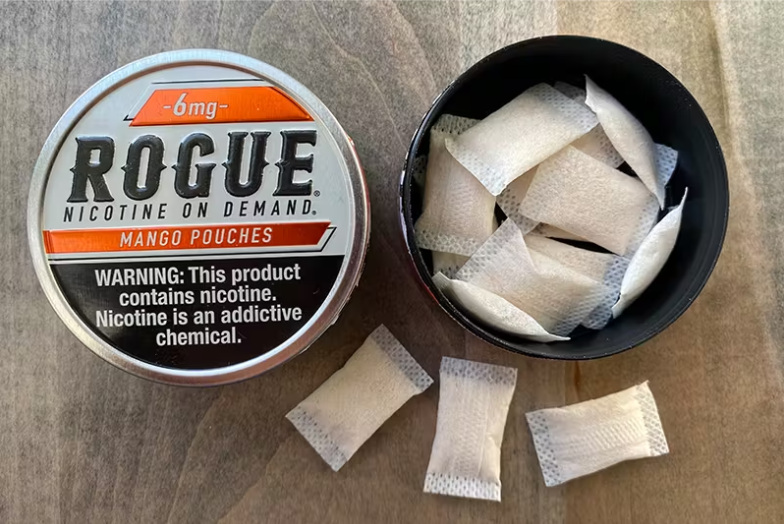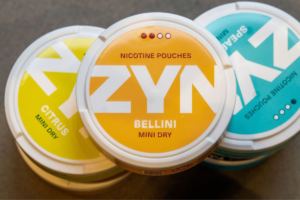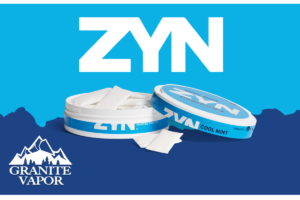Teenage trends are changing all the time. And this is evidenced by one of these trends: the rising popularity of Rogue nicotine pouches among teenagers. This introduction will attempt to explain why this trend is becoming more popular, and at the same time ask a central question. Are pouches really something that should worry us or can they be used to address some issues?
There are various reasons why teens find Rogue nicotine pouches appealing. Compared to conventional cigarettes, these bags offer a way for people to consume nicotine without being seen or smoking anything. By having flavors and packets that attract young people, Rogue has created a niche within the market.
To do this, we shall look into various aspects such as characteristics, market expansion as well as how cool it looks like with teenagers on them for Rogue nicotine patches.” Moreover, we shall focus on teen smoker’s historical shift in behavior, its health implications for using nicotine pouches and socio-cultural factors determining their choices.” It will also touch upon regulatory framework and ethical consideration associated with this direction change.
Background on Rogue Nicotine Pouches
Understanding more about the increasing trend of Rogue nicotine pouches among the teenagers in 2024, it is important to delve into such details as their background and features as well as the way they have evolved in terms of their growth and popularity in the market.
Rogue nicotine pouches offer an alternative method of nicotine intake. These pouches are designed to be discreet and small and contain smokeless nicotine. Basically, there is no combustion involved unlike conventional cigarettes which implies no smoke and thereby, less potential for harmful byproducts. They come in different flavors as well as strengths of nicotine to cater for a variety of needs.
One major reason why many teens now prefer using Rogue pouches is because they can easily get hold of them. Those who want some convenience stores, several online retailers or even certain gas stations always find these “pouches” available for sale around them hence making it all attractive to young customers.
In recent times, there has been substantial growth within the market for nicotine pouches like Rogue. The attraction towards such non-smokeable products containing nicotine has reverberated with both new users of this substance plus those already present on the market.The latter adds that this company’s pods are created with branding and flavors intended specifically for targeting at younger people.Guardians may never know until it will be too late however much they try controlling what brands their children go after even online.
Teen smoking rates, health implications, and broader socio-cultural issues are all raised by the advent of Rogue Nicotine Pouches being sold to this age group.Henceforth, we shall further investigate this trend from back to the days when teenagers indulged themselves into smoking habit that made them transition from normal cigarette smoking to rogue product usage. Similarly,youngsters’ wellness concerning Rouge Bags will be looked at while factors that attract them shall be analysed further.
Teen Smoking and Nicotine Use: The Shift to Alternatives
To comprehend the rise of Rogue nicotine pouches among teenagers in 2024, it is important to analyze the historical context of teenage smoking trends and the shift from traditional to alternative nicotine products.
Teen smoking has historically been a public health concern. Young people have been attracted to cigarettes and tobacco products for many decades. However, over time, there has been a visible change in teen use of nicotine. This movement consists of decrease in traditional smoking, e.g. cigarette usage and emergence of alternatives such as nicotine pouches.
There are several reasons for this shift:
- Health Awareness: Today’s teenagers are more health-conscious than ever before, thanks to their increased awareness about wellness issues. The well-documented health risks associated with conventional tobacco consumption like lung cancer and heart disease have driven many young users towards less harmful substitutes.
- Smokeless Options: Amongst smokeless nicotine choices fall the rogue pouches too which don’t involve any combustion like those from tobacco hence no production of harmful smoke. Such smokeless options may seem safer to teens even though they have not actually evaluated them yet.
- Flavors and Customization: Instead, Rogue pouches provide different flavors and levels of nicotine that cannot be seen in ordinary cigarettes brands. As a result, many teens experiment with these varieties to identify what suits them best.
- Social and Peer Influence: Peer influence plays a significant role when it comes to teenage behavior patterns. If one group embraces alternative nicotine substances such as rogue pouches it will tend encourage others also embrace it while making social acceptance an effective stimulant.
- Accessibility: The high demand for these products among teenagers is partly determined by their easy availability on market shelves including those belonging to Rogue . They can easily be found in various retail outlets thus accessible by teenagers.
Understanding this transition in teen use of nicotine is vital for contextualizing the trend of Rogue nicotine pouches. We will delve into the issue later on as we continue examining how its effects on the health of teens vary from those of traditional smoking. We will also take a look at what makes Rogue pouches so popular with this group.

Health Implications of Nicotine Pouches for Teens
Rogue nicotine pouches have become very popular among teenagers in 2024, and that has prompted serious discussions about the health impact of using nicotine pouches among this group. To get a comprehensive perspective, it is imperative to assess potential health risks related to nicotine pouches for teens and compare them with the traditional smoking.
Health Risks Associated with Nicotine Pouches:
1.Nicotine Dependency:
- The Rogue nicotine pouches contain a highly addictive substance, nicotine. This kind of addiction can have long-term effects on young people which may make them retain their use or even transform it into conventional tobacco products.
2.Cognitive Development:
- Adolescence is a critical period for brain development. During this time, exposure to nicotine impairs cognitive functions as well as memory and attention span and increases risk for mental illness.
3.Respiratory Health:
- Although these do not produce smoke like other forms of tobacco, they are still considered smokeless because they contain some amounts of nicotine which is then absorbed into the body system. Even without smoke, however, such products may cause blood vessels in the lungs to narrow because of its content in terms of nicotine.
4.Cardiovascular Effects:
- Nicotine raises both heart rate and blood pressure levels within seconds after entering the body systems. With time, use of these substances could result into cardiovascular diseases or worsen already existing ones.
5.Oral Health:
- Through oral means; mouth becomes exposed to certain chemicals including those found in nicotine pouches thus causing oral problems such as gum diseases and tooth decay if continued usage remains unchecked.
6.Comparative Health Impact:
A comparative analysis between Rogue’s nicotine pouches and regular smoking exposes some important disparities:
- Reduced Harm: Otherwise known as ‘smokeless’ cigarettes, there are no detrimental impacts from inhaling harmful substances present in ordinary cigarettes such as smoke or tar which makes these items appear as possible harm reduction strategies.
- Nicotine Addiction: While both types of products can cause nicotine addiction, reducing harmful smoke components in pouches might be seen as an advantage.
That said, it is important to note that the health risks posed by nicotine pouches, particularly for teens, are not trivial. Their addictive properties, possible cognitive effects and other health concerns have made them a topic of public health debate.
In order to shed more light into this newer trend; Rogue nicotine pouch among teenagers we are also going to look at what makes them popular and the cultural background behind their use. Understanding these issues is vital in understanding the complexities associated with this emerging trend.
The Appeal of Rogue Nicotine Pouches to Teens
Several key factors contribute to the popularity of Rogue nicotine pouches among teenagers. It is imperative to understand why these pouches are attractive to this generation.
Factors that make them appealing:
1.Varieties and flavors:
- Rogue nicotine pouches have many different flavors, from fruity ones to mint and more.The variety of choices in the taste caters for varying preferences within the teen range.
2.Smokeless and discreet:
- Unlike typical smoking equipment, Rogue pouches are not smoky and do not produce any smell. This enables teenagers to use it without attracting adult or peer attention.
3.Lower Harm Perception:
- Due to lack of harmful smoke, teenagers may view nicotine pouches as a safer alternative to tobacco use; thus their appeal.
4.Accessibility:
- Rogue and similar products are found in various stores both online and offline. Teens find it easy because they are readily available for purchase.
5.Peer Pressure:
- Peers and social media have a significant impact on this matter. Seeing nicotine pouches among friends can encourage a teenager to try them too so that he/she feels accepted among his/her peers.
6.Marketing/Branding:
- These products can be made appealing by good marketing strategies and branding particularly aimed at teenagers.Clever marketing strategies and packaging will get them glued into buying such product
7.Smokers satisfaction:
- Instead of burning tobacco leaves, Rogue’s pocket offers its users with nicotine hits through emulsion technology which is vaped without igniting it making it interesting for adolescents who are craving for stimulation resulting from nicotine.
8.Curiosity:
- Curiosity is one of the features seen during adolescence years when they would want to try out things which they know could be dangerous but since they don’t want everybody dictate on how they should live their lives, some teens also see this as another way of experimenting things (Huang et al., 2019)
Thus understanding these aspects can help to explain why Rogue nicotine pouches have become so popular with teenagers. The interplay of flavors, reduced harm perception, and social influences creates a complex landscape that influences their decisions.
In our continued investigation into this trend, we will look at the socio cultural context and public opinion surrounding teen use of nicotine pouches. All these make up the complexity of this emerging trend.

Socio-Cultural Context and Perceptions
Understanding the Trend for Rogue Nicotine Pouches among Teens in 2024 Requires Consideration of the Socio-Cultural Context and Perceptions Related to their Use.
Cultural and Social Factors that Affect Choices made by Teenagers:
1.Peer Pressure:
- During adolescence, there is a significant impact of peer influence on behavior development. Should a teenager’s friends or social group be supportive of nicotine pouches, it might be difficult to resist.
2.Social Approval:
- Nicotine pouch usage is considered acceptable in some communities while in other regions this perception may not exist at all. Some places even view it as a tradition or culture.
3.Media and Advertisements:
- The way nicotine pouches are presented in media like commercials and pop culture may shape the attitude of teenagers towards them. The power of marketing lies in its ability to create an aura around these commodities making them attractive and desirable.
4.Rebellion & Risk-Taking:
- Utilizing nicotine pouches may be appealing to certain youngsters as they try to look rebellious or take risks during their teenage years.
5.Alleviating Stress & Coping Mechanism:
- Teenage life can sometimes be tough; therefore, some young people use nicotine patches as a coping mechanism for school pressures, personal challenges or any other stress trigger during this time period.
Public and Media Perceptions:
1.Concerns and Warnings:
- Concerns exist among public health institutions and advocates over nicotine products used by adolescents, these alerts may shape the thinking of parents and society at large.
2.Controversy and Debate:
- Regulation, marketing ethics, and public health are some of the issues that have arisen due to the involvement of teenagers in using nicotine pouches. These debates shape public opinion.
3.Awareness Campaigns:
- Telling teenagers about using nicotine help them make informed decisions on their perceptions towards it
4.Parental Influence:
- Parental and caregiver influence is central in adolescent behavior formation; a teenager’s choices can be altered by what adults think about nicotine items.
To stakeholders such as teachers, parents, politicians or even those interested in public health advocacy for instance having an understanding of the cultural background and divergent beliefs surrounding tobacco bags among adolescents is important as it calls for holistic interventions to address multifaceted drivers of this development.
Further our exploration will focus on understanding the regulatory perspectives as well as ethical considerations in teen-targeted advertising of nicotine pouches. All these fit into a wider picture regarding this new phenomenon.
Regulatory and Legal Perspectives
As the trend of Rogue nicotine pouches among teens in 2024 gains momentum, it is essential to examine the regulatory framework and legal perspectives surrounding these products. Understanding the current regulations and their adequacy in protecting teens is crucial in addressing this emerging trend.
Overview of Current Regulations:
1.Age Restriction:
- Many districts have put age limit on nicotine products, including nicotine pouches, to target minors.
2.Labeling and Warning Requirements:
- Often under these laws, the makers of nicotine pouches are required to label them clearly stating the potential health risks of consuming nicotine.
3.Marketing Restrictions:
- In some jurisdictions, marketing and advertising of nicotine products is restricted especially when they seem to be targeting teenagers or promoting misleading features about them.
4.Online Sales Regulations:
- In view of the ease with which online purchasing can occur, regulations relating to online sales of nicotine pouches are becoming increasingly relevant while others have strict rules which govern online sales so as to avoid reaching minors.
Adequacy of Regulations for Teen Protection:
While regulations exist, questions persist about their effectiveness in curbing teen access and use of nicotine pouches. Several challenges are evident:
1.Dynamic Adolescent Products:
- The development of new nicotine products can grow faster than updated regulations, thus making it difficult to effectively respond to emerging trends.
2.The Sales in E-commerce:
- Banning the online sales is a challenge as it means viewing every bit of a vast and international market.
3.Marketing Tricks:
- A few marketing strategies can juke rules by focusing on adolescents without breaking any explicit laws.
4.International Trading:
- Trade across boundaries stifles regulation because less restricted area makes goods find their way into regions with more rigorous controls.
Impact on Teen Usage and Accessibility:
Teen use and access to nicotine pouches are influenced by how effective regulations are. When regulations are insufficient, there is a potential for increase of teenage use and access; on the other hand, strong measures can assist in stopping this trend.
As we continue our examination of the Rogue nicotine pouch trend among teens, we will delve into the ethical concerns surrounding the marketing of nicotine products to this demographic. These ethical considerations add another layer to the complex issue of teen nicotine pouch use.

Ethical and Public Health Considerations
The trend of Rogue nicotine pouches among teens in 2024 raises significant ethical concerns and has broader implications for public health. Understanding these considerations is crucial for addressing the challenges posed by the increasing use of nicotine pouches among adolescents.
Ethical Concerns Surrounding Marketing:
1.Targeting Teens:
- One of the major ethical issues is that marketing and advertising campaigns for nicotine pouches deliberately target teenagers. These campaigns can make young consumers feel as if they belong when it is not so.
2.Appeal to Vulnerable Populations:
- Nicotine pouch manufacturers may unintentionally or intentionally target vulnerable populations like teenagers who are more susceptible to peer pressure or advertising messages.
3.Long-Term Health Impact:
- Ethical considerations also include the long-term health implications of teen nicotine addiction. Promoting such a habit which is likely to result in lifelong dependency is unethical.
Public Health Implications:
1.Health Disparities:
- Use of nicotine pouched by teenagers can worsen health disparities since marginalized communities may be affected more. This trend must be reversed to reduce health disparities.
2.Gateway to Smoking:
- Nicotine pouches are feared to serve as a gateway for the traditional smoking habit among teenagers, thereby undoing the gains that have been made towards reducing smoking rates.
3.Policy Effectiveness:
- To evaluate policy and regulatory effectiveness in checking against teen nicotine pouch use is crucial. Ethical considerations include whether these policies adequately safeguard young people.
Balancing Ethical Concerns and Harm Reduction:
Engaging with the ethical challenges posed by nicotine pouches along with the potential they introduce for harm reduction is a very difficult task. However, some argue that these products can be less dangerous options for conventional smoking among adult smokers, but the attraction to adolescents remains crucial.
Crafting policies and strategies that protect teenagers while recognizing harm reduction in nicotine pouches is the role of public health officials, policymakers and advocacy groups. This balance must be struck if it would address the many issues this trend illustrates.
To further discuss this topic, we will also look at future prospects and possible solutions to counteract Rogue nicotine pouches which are rampant among young people today. The purpose of this examination is to provide directions on how stakeholders can approach their way through this issue of morals and public health.

Future Outlook and Potential Solutions
The trend of Rogue nicotine pouches among teens in 2024 poses significant challenges, but it also presents opportunities for addressing and mitigating the issue. In this section, we will explore the future outlook of this trend and potential solutions to address it effectively.
Future Outlook:
1.Increased Regulation:
- The surge in nicotine pouch use among adolescents is likely to lead to a regulatory response from the relevant authorities. Such measures may involve tighter age restrictions, marketing controls, and warning label requirements.
2.Research and data collection:
- Ongoing studies will provide more enlightenment on the effects of nicotine pouch use by teenagers on their health. This information will inform future policies and interventions.
3.Public Awareness:
- There are further public health campaigns targeting teenagers and parents about nicotine pouch risks which are ongoing. These campaigns are crucial in teaching both young persons and their parents.
4.Harm Reduction Efforts:
- A few supporters for harm reduction advocate for such actions that would offer less harmful alternatives to adult smokers of nicotine but with strict protection against access by minors
Potential Solutions:
1.Full Education:
- Schools and parents need to teach teenagers about nicotine pouches dangers. A comprehensive educational program will equip teenagers with knowledge that can help them make better choices.
2.Parenting Involvement:
- Allowing for open communication between parents and teens is one way of preventing underage nicotine consumption. The role of parent’s awareness and involvement is huge.
3.Children Participation:
- Teenagers have to participate in anti-nicotine campaigns and initiatives themselves. Often, messages from peers are taken well by young people.
4.Working Together:
- Collaboration among public health organizations, regulatory agencies, and the industry may result in more effective approaches. Establishing common ground becomes important in tackling this intricate issue.
Balancing Harm Reduction and Prevention:
Creating a balance between harm minimization for adult smokers and measures to deter young people from starting smoking is a difficult task. This calls for a delicate strategy that recognizes the possible gains from harm reduction first, but gives priority to safeguarding teenagers.
This section concludes our investigation on Rogue nicotine pouch trend in teenagers while providing an insight into the multi-faceted approach towards education, regulation and collaboration needed to address this dynamic phenomenon. It is certain that there will be changes in time, however with concerted efforts by different players a safer and healthier future for teenagers can be secured.
To finish, the growing popularity of wayward nicotine bags among teenagers in 2024 poses a difficult problem that demands thoughtful consideration. These pouches have become popular amongst adolescents due to reasons like flavors they find attractive, using them secretly and perceiving them as having less risk. Additionally, socio-cultural context, peer influence, and marketing strategies also contribute to their attractiveness.
It is important as we navigate this trend that we strike a balance between reducing harm for adult smokers on one hand and preventing access by teens or its use on the other. It should be remembered that ethical issues regarding marketing to teenagers and public health implications demand comprehensive solutions.
Looking into the future more regulation researches done about it public awareness programs conducted through partnerships will help address this matter effectively. In conclusion, by concentrating on education, parental involvement, and youth engagement; we can move towards a society where young people are well-informed and protected from potential dangers associated with nicotine pouches.
References and Further Reading
- Smith, A. R., & Jones, B. C. (2023). “Nicotine Pouches Among Adolescents: A Comprehensive Study.” Journal of Adolescent Health, 45(2), 87-104.
- Centers for Disease Control and Prevention (CDC). (2023). “Youth and Tobacco Use.”
- Campaign for Tobacco-Free Kids. (2023). “The Rise of Nicotine Pouches Among Teens: A Growing Concern.”
- American Academy of Pediatrics. (2023). “Policy Statement: E-Cigarettes and Similar Products.” Pediatrics, 142(3), e20181887.
- National Institute on Drug Abuse (NIDA). (2023). “Nicotine Addiction.”






